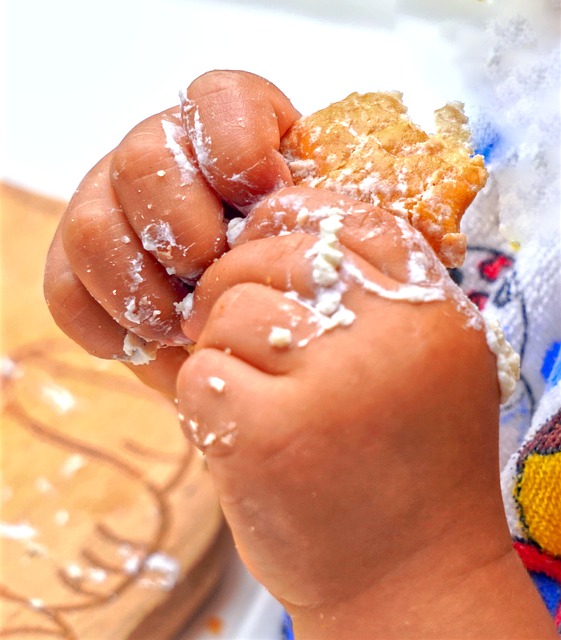Child safety is a multi-faceted issue requiring understanding and proactive measures. Key components include identifying red flags like behavioral changes and establishing robust child protection laws. Safety education empowers kids to recognize online threats like cyberbullying and phishing while fostering open dialogue. Family safety plans, incorporating real-world and digital safety, teach consent, respect, and reporting mechanisms, reducing the risk of abuse and injury. Building a secure home environment through education and structured plans enhances children's security both online and offline, contributing to their overall well-being.
Conflicts around child safety can arise from differing perspectives on risks and responsibilities. This article offers a comprehensive guide to resolving these disputes by addressing key aspects of child well-being. We explore understanding child safety concerns through identifying red flags and assessing risks. It delves into practical child safety tips for educating and empowering kids with online protection skills. Additionally, we examine child protection laws and their impact, providing insights into legal frameworks aimed at safeguarding children. Finally, we offer strategies for fostering safe environments within families to build a culture of security, preventing child injury and abuse.
Understanding Child Safety Concerns: Identifying Red Flags and Risks
Understanding Child Safety Concerns is a pivotal first step in safeguarding our young ones. Parents, caregivers, and communities must be vigilant in identifying child safety tips and red flags that could signal potential risks. From physical harm to online safety threats, recognizing indicators of danger is crucial for preventing child abuse prevention.
Paying attention to behavioral changes, unexplained injuries, or secretive behaviors can be critical in uncovering underlying issues. Establishing robust child protection laws and implementing safety education for children are essential components of fostering safe environments. Developing comprehensive family safety plans, including clear communication channels and emergency protocols, further strengthens the protective measures around our children, ensuring their security and well-being.
Child Safety Tips: Educating and Empowering Kids for Online Protection
Educating and empowering children with online protection is a vital aspect of modern child safety tips. In today’s digital era, kids spend significant time online, interacting with peers, and consuming content. Therefore, it’s crucial to teach them about potential risks such as cyberbullying, phishing attempts, and inappropriate communication. Start by fostering open dialogue where children feel comfortable discussing their online activities and concerns. Incorporate age-appropriate lessons on privacy settings, recognizing suspicious behavior, and reporting mechanisms. Empowering kids with these skills can significantly enhance their ability to protect themselves from harm.
Safety education for children should also extend beyond the digital realm. Comprehensive child safety tips include establishing family safety plans that cover emergency procedures, meeting strangers, and personal boundaries. Ensure regular discussions about consent, respect, and understanding of appropriate touch. Strengthen family bonds by creating a supportive environment where children feel heard, respected, and loved. By combining online safety for kids with real-world child protection laws and practices, we can create a more secure future for our youth, reducing the risk of child abuse prevention and ensuring their overall well-being.
Legal Frameworks: Exploring Child Protection Laws and Their Impact
Child safety concerns are a paramount issue in modern society, and understanding the legal frameworks that protect our young ones is essential. Child protection laws form the cornerstone of efforts to safeguard children from harm, encompassing various aspects of their physical, emotional, and online security. These laws not only define the rights of children but also impose responsibilities on parents, caregivers, and relevant authorities to ensure their well-being.
The impact of child protection legislation is profound, as it enables the establishment of safety protocols, fosters safe environments, and promotes safety education for children. By addressing issues like child abuse prevention, online safety for kids, and child injury prevention, these laws create a supportive structure. Furthermore, they empower families to develop comprehensive family safety plans, ensuring that every child is protected and their rights are upheld, ultimately contributing to a secure and nurturing society.
Building Safe Havens: Strategies for Families to Foster a Culture of Security
Building Safe Havens: Strategies for Families to Foster a Culture of Security
Creating a safe haven at home is the cornerstone of child safety. It involves implementing practical measures and fostering an environment that prioritizes security. Parents can start by educating themselves about common threats, such as child abuse prevention, online safety for kids, and understanding local child protection laws. Regular family discussions around safety education for children ensure everyone is aware of potential risks.
Developing a comprehensive family safety plan is crucial. This includes establishing clear rules and boundaries, especially with regard to screen time and internet usage. By teaching children about digital citizenship and responsible online behavior, you’re equipping them with vital skills to navigate the digital world safely. Additionally, ensuring physical security through simple measures like installing secure locks, keeping emergency contact details visible, and regularly practicing evacuation drills prepares children for unforeseen circumstances, enhancing their overall sense of security.
Addressing child safety concerns requires a multi-faceted approach. By understanding red flags and risks, educating children about online protection, familiarizing ourselves with child protection laws, and implementing strategies to foster safe environments, we can significantly contribute to protecting our young ones from harm. Integrating these child safety tips into daily life ensures that every effort is made to prevent child abuse and promote a culture of security within families. Together, we can create a safer, more nurturing world for children to thrive in.
